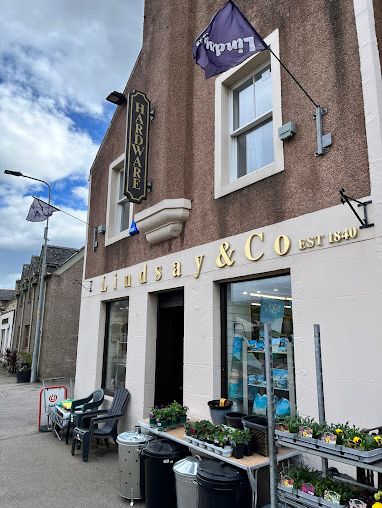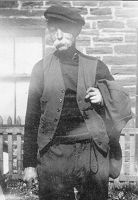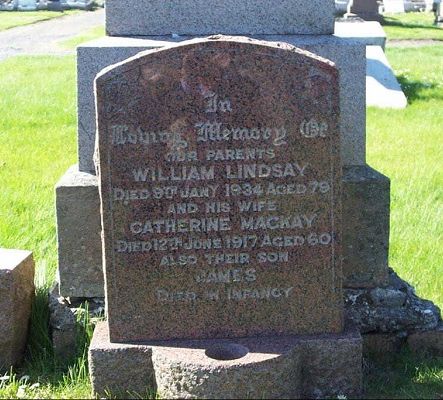Billy and Jimmy Lindsay

At some point, probably in 1875, perhaps a year earlier, two young brothers were sent south from the far north of Scotland, from Sutherland, to the then World's centre of metal-working, Birmingham. Again probably it was to learn more of their trade. Their late father, James Snr, had been a blacksmith-ironmonger based in Golspie but with interests further north, in Wick and Thurso. And the brothers' route was quite probably via Glasgow, where they must have picked up something of a knowledge of the new game there, football, then unknown north of the Central Belt.

Certainly once in Brum they met fellow Scot, the Glaswegian, George Ramsay. They may even have known him from north of the border, where he is known to have been active in the game. And, whilst it is Ramsay, who is largely credited as founder of Aston Villa, would play for the club for six years and go on to manage it for forty years more, their part in the transition of The Villa from a extension of a local cricket team to the footballing power it is today cannot be underestimated.
The middle sons of four of the late James Lindsay Snr Billy, like Ramsay, was born in 1855 and Jimmy, two years later. But unlike Ramsay they would not stay south. By 1881, if not much earlier, both had left Birmingham, their names after that 1875-6 season ceasing to feature on team sheets as they returned north to relative obscurity. Billy, pictured left, went to Thurso to run the local branch of the family business and in Wick marry Kitty McKay, a girl from near-by Latheron. And it is Wick that he lived his later life and is buried in the Burial Ground in the town with his wife and their only boy, James, who died in infancy and was presumably named for his uncle. Perhaps fittingly the cemetery surrounds Wick Academy F.C. field. Meanwhile the elder James would return to the village of Golspie itself, where on the main street there is to this day a hardware store, an iron-mongers, Lindsay & Co., once owned by it and still bearing the family's name.
However, long before then Aston Villa had played their first game, a friendly, at the new Perry Bar ground on 11th October 1876. It was against Wednesbury Town. Billy Lindsay, aged twenty-one, played up front, James Lindsay, nineteen just, in defence. It is assumed George Ramsay, also aged just twenty-one, was also playing, also now as a forward and probably on the left. Villa won 1:0. Seven years later The Birmingham Daily Mail, would write of Aston Villa:
"Until 1876 there is little of note with which the club can be identified, but towards the end of the season of 1876/77 (ed: this should be 1875/76) they were joined by three Scotchmen, two brothers named Lindsay, who came from Golspie in Sutherlandshire, and Mr G. B. Ramsay. The Lindsays showed the Villa how to play a good back game, and Ramsay, who had for several seasons previous been considered a very fair forward in the Glasgow Rovers, a club which when it died gave several good players to the Queen's Park, taught them dribbling."
And it is the Perry Barr ground that is the key. Whilst still in Birmingham “John” Lindsay, and Ramsay himself had both realised that to prosper the club had to take gate-money and had found for the new club a new ground, one around which a wall could be built, blocking the view and making it necessary for spectators to pay to enter. In fact it might even be said to have been the very first step on the road to the professional game and may well have been Jimmy Lindsay, who was really the finder. The site, now a garden centre, was at Perry Barr immediately opposite a known, existing smithy, which was also said to have served as the team changing rooms. Indeed the Perry Barr ground would remain home to The Villa until 1897, by which time it had actually been not just a start but instrumental in professionalisation, and Ramsay had made it one of England's great teams, having by then won 3 Championships and 3 FA Cups culminating in the Double in 1897 itself.
But the club-creation story may not end there. Jimmy, who is recorded in his home village in 1881and working in the family business with his elder brother, Andrew, before seeming to disappear from records, was perhaps even to found his own local, village team. Golspie Sutherland FC is, perhaps not coincidently, the oldest club in all North Scotland. It was formed in 1877, exactly when the wanderer might have returned, and notably two years before even neighbouring and now Highland League club Brora Rangers, perhaps a Golspie spin-off, and a decade before clubs in the Highland capital, Inverness.

Billy Lindsay
Birth Locator: Golspie, Sutherland
Residence Locator(s): Green Road, Wick, Caithness
Grave Locator: The Burial Ground, Wick, Caithness
Jimmy Lindsay
Birth Locator: Golspie, Sutherland
Residence Locator(s): Golspie, Sutherland
Grave Locator: n/a
and
Other Sources: Villa